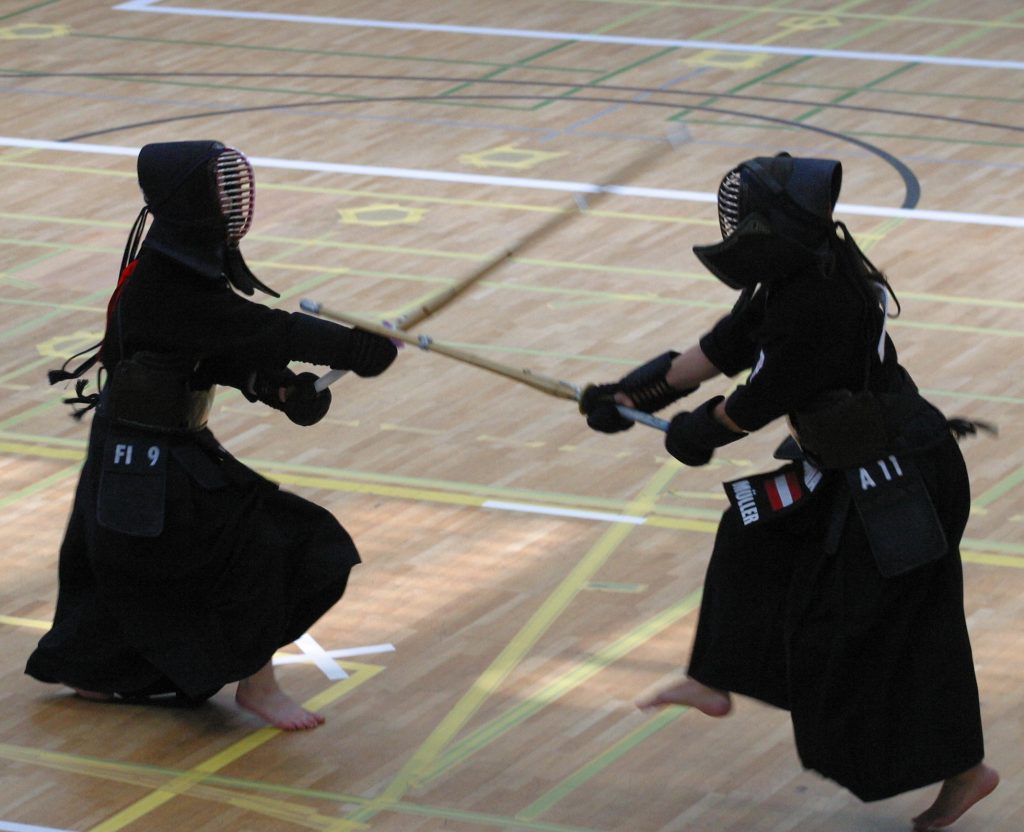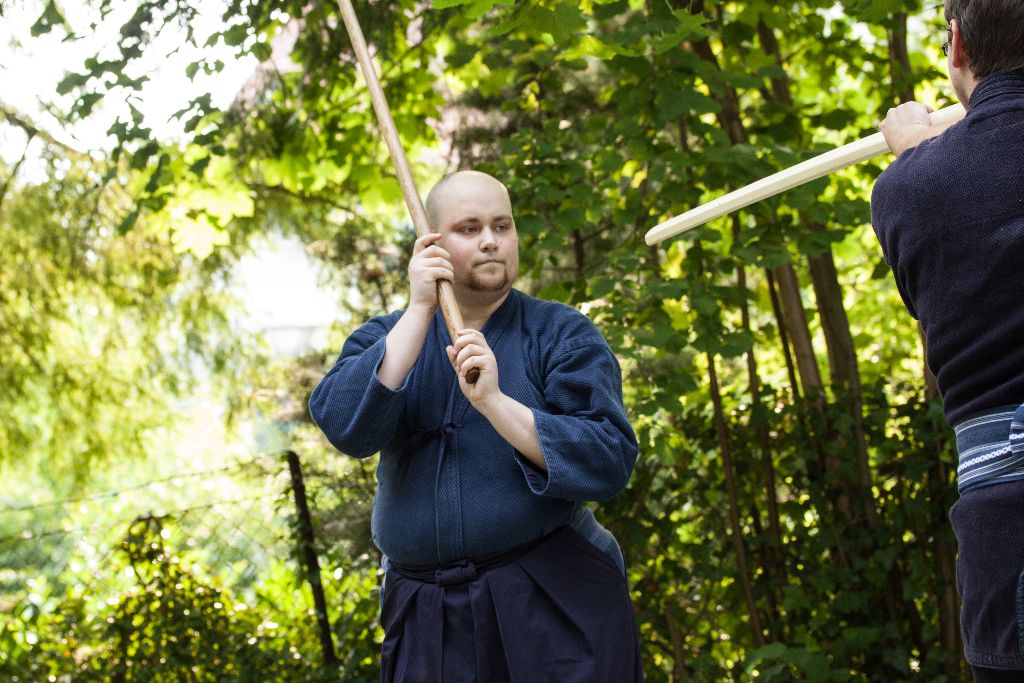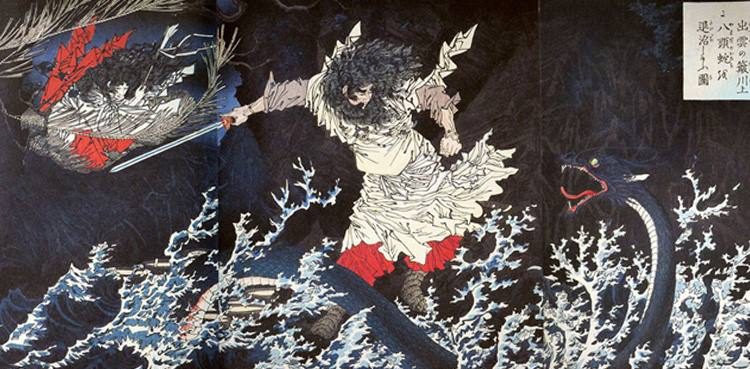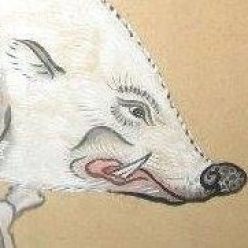
Kenjutsu[剣術] is a term that translates simply to sword technique. Many may also have heard the term Kendō[剣道]. Kendō, translates to: The way of the sword and is as a term today used primarily for modern Japanese fencing. Kenjutsu, on the other hand, is used for the sword techniques of the schools of Kobudō[古武道]. While these schools share some amount of fundamentals, the techniques and strategies taught in them are sometimes very different. Therefore, kenjutsu should be understood primarily as an umbrella term rather than a stand-alone martial art. There is no such thing as “the” Kenjutsu, but only Kenjutsu of different schools.

This pluralism goes so far that there are traditionally other school-specific terms for the sword techniques of the individual school. In the Katori Shintō-ryū[香取神道流] taught at Kobukai Berlin, the traditional term is actually Tachijutsu[太刀術]. In the Tatsumi-ryū[立身流] it is Tōjutsu[刀術]. The attentive reader may have noticed that both terms, Tachijutsu and Tōjutsu use the character Tō[刀]. Today’s more common Kenjutsu, however, uses the character Ken[剣]. Japanese characters can be read in different ways therefore 刀 can also be read as Katana and 剣 can also be read as Tsurugi. So there are two completely different characters for the term sword.

This is because the characters originally meant two different types of Japanese swords. Tsurugi are the swords used in Japan well before the time of the samurai and were probably imported from China. They are double-edged and straight. In contrast, the katana, the famous samurai sword, is a curved sword with only one edge that is also classified by many as a saber. A convincing explanation why people nowadays speak of “tsurugi technique” when they train with a katana might be found in the mythological and religious significance of the sword in Japan. At the time when the origin myths of Japan were written down the katana did not exist yet, warriors used tsurugi as swords in them. So did the kami[神], the deities and spirits of Japan. And it is said that fencing is an art taught by the kami. And by using the term kenjutsu, they tried to emphasize this mythological, religious context. Which plays an important role in the Japanese self-image. As one of the three Imperial Regalia is also the Sword Kusanagi no Tsurugi, the grass cutter.


In the Katori Shintō-ryū, kenjutsu is practiced in various contexts. The Omote no Tachi[表之太刀] set, for example, is said to deal primarily with fencing in armor, and Gogyō no Tachi[五行之太刀] in comparison deals more with fencing in everyday clothing. The signature move of the Shintō-ryū is the maki uchi. For the maki-uchi, the blade is not raised above the head, but is placed on the left forearm and struck from that position. The rationale for this is that the ornamental fittings of the kabuto, the helmet worn with the armor, hindered the samurai to attack with a powerful sword strike reached out from behind the head. A Bokutō[木刀], a wooden sword about 1m long, is used as a practice simulator. In the Shintō-ryū, a tsuba[鍔], the guard of the blade, is not added to the Bokutō, as hand protection as the student should not get used to rely upon or get accustomed to it. The full curriculum of the Katori Shintō-ryū includes basic drills, as well as advanced and “secret” techniques for fighting with the longsword. In addition, as an advanced student, techniques for using both the short and long sword simultaneously are practiced, as well as advanced techniques with the short sword.
